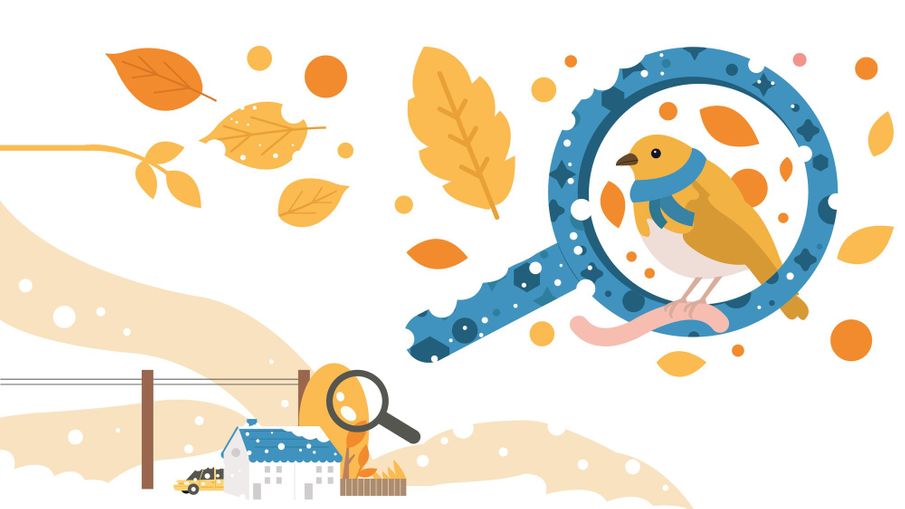As the temperature drops, and lockdown restrictions linger, we look at how you can continue to connect with nature throughout the winter months
Whether it’s exploring a local park, or finding solace tending to plants in the garden, over the past year many of us have come to better appreciate nature closer to home. According to research from charity Mind, spending time in nature can support our mental health, and anyone who has experienced the feeling of a winter morning’s air can attest to how it can clear our minds.
Here, we explore the ways we can celebrate our connection with nature, and the changing seasons, without having to go too far beyond our front door.
Learn about nature
Appreciating what we have close by can help us feel more connected to where we live, and to see the beauty in the world around us. Try taking a mindful, curious approach to your surroundings. What breed is that friendly bird who keeps landing on the windowsill? Which flowers grow in the local hedgerows? The RSPB and Woodland Trust websites are a great starting point for learning how to identify wildlife.
Next time you go outside, take time to notice what’s around you. Can you hear any birdsong? The wind teasing the trees? How does the air smell and feel? Even in winter, there are signs of nature to notice and enjoy.

Start a nature journal
Keeping a nature journal is the perfect way to track and celebrate nature and the changing seasons. We can record our thoughts and observations of the natural world, like when we see the first snowdrops of the year peeping through the grass, or a hedgehog rummaging in the undergrowth as it emerges from its winter hibernation.
If you struggle to put pen to paper, try freewriting just after you return from being outside. Brew your favourite hot drink to warm up, then settle down somewhere comfortable and give yourself five or 10 minutes to write uncensored. You could detail any plants or animals you came across, the weather, the scents in the air, how you feel – anything that captures your experience.

Celebrate the seasons
Sometimes we’re so swept up in our lives that we forget to pause and notice the world. Celebrating the changing seasons is an easy way to reconnect.
When the days seem dark and long, look to traditions like lighting candles around 1 February to mark the ancient festival of Imbolc, which is the midpoint between the winter solstice and spring equinox. And consider eating food that’s in season, if you can. BBC Food is a useful resource for finding out what’s in season each month, accompanied by delicious recommended recipes.
Help the environment
More and more of us are realising the impact our actions have on the planet, and want to make a difference. Growing our own food, whether it’s a potato plot in the garden, or salad leaves on your windowsill, is a great way of connecting with and learning about nature, while also reducing the waste that can be caused by the commercial growing of food.
If you’re able, try leaving food out for wildlife like badgers or birds – they’ll especially appreciate it this time of year, when food is scarcer. Think of other ways you can care for the planet at home, from composting food waste and using energy-efficient light bulbs, to getting creative by upcycling old clothes and furniture.
Be inspired by nature writing
Nothing’s better than snuggling up with a book on a winter’s day. Nature writing has been around for centuries, with authors capturing the natural world and our relationship with it.
Nan Shepherd’s The Living Mountain is a well-loved example of nature writing. Written during the Second World War, she writes in evocative, poetic prose about her years exploring the Cairngorm Mountains in Scotland.
2020 Wainwright Prize winner Dara McAnulty’s Diary of a Young Naturalist, The Stubborn Light of Things by Melissa Harrison, and the poetry of Alice Oswald, are other wonderful examples of nature writing to relax into and be inspired by.


Comments